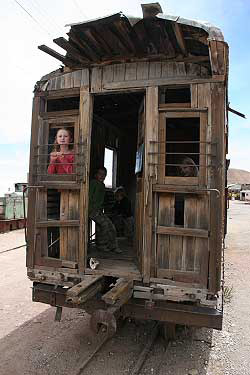 On
the way to Potosi, we stop by chance in a small town, Pulacayo. During
the 19th century, it was a famous city for its silver mine. In 1959, 20
000 miners worked there. Today it is a ghost town. At the end of the
town, we found a cemetary for old locomotives. One of them has been
attacked by the legendary Butch
Cassidy & Sundance Kid...
On
the way to Potosi, we stop by chance in a small town, Pulacayo. During
the 19th century, it was a famous city for its silver mine. In 1959, 20
000 miners worked there. Today it is a ghost town. At the end of the
town, we found a cemetary for old locomotives. One of them has been
attacked by the legendary Butch
Cassidy & Sundance Kid...

 We
cross nice valleys ... Cactus are flowered for the moment ...
We
cross nice valleys ... Cactus are flowered for the moment ...
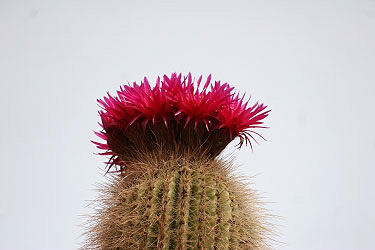
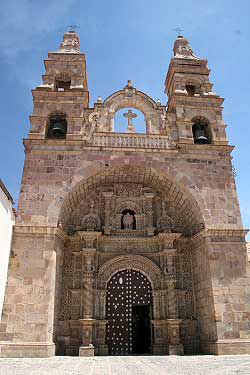 Finally,
we reach Potosi, the highest city in the world ... at an altitude of
4090 m. We found a very nice city, we love immediately to walk in its
streets ...That colonial city was one of the richest city in the world
... The silver mines supplied for centuries the spanish empire. And for
that, 8 millions of indigenes and african slaves died here.
Finally,
we reach Potosi, the highest city in the world ... at an altitude of
4090 m. We found a very nice city, we love immediately to walk in its
streets ...That colonial city was one of the richest city in the world
... The silver mines supplied for centuries the spanish empire. And for
that, 8 millions of indigenes and african slaves died here.
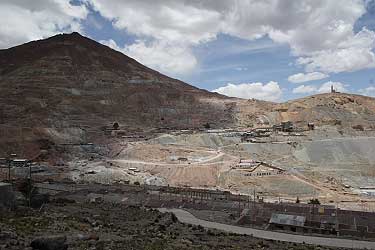
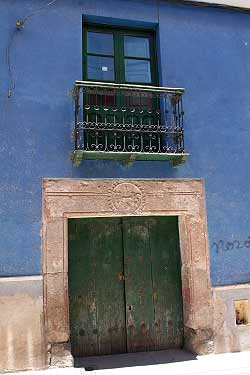

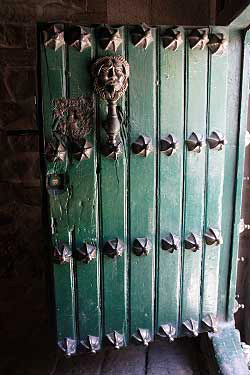
 We
meet Frederic and 2 of his 3 children. He's travelling in Potosi in
order to make the advertisement of his Hotel. Frederic left Belgium 7
years ago to travel for one year. After 6 months, he decided to stop and
to stay in Tarija, south of Bolivia. He worked therefore as voluntary
for 3 years and after he built his hotel. We take the breakfast two days
together with him. We wish him a lot of successes for his project. For
more informations :
www.lapasarelahotel.com
We
meet Frederic and 2 of his 3 children. He's travelling in Potosi in
order to make the advertisement of his Hotel. Frederic left Belgium 7
years ago to travel for one year. After 6 months, he decided to stop and
to stay in Tarija, south of Bolivia. He worked therefore as voluntary
for 3 years and after he built his hotel. We take the breakfast two days
together with him. We wish him a lot of successes for his project. For
more informations :
www.lapasarelahotel.com
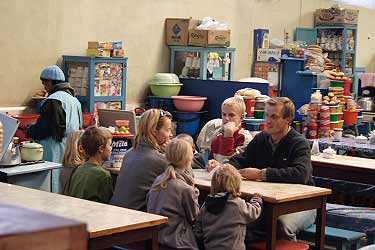
The streets are crowdy... Most of the women are dressed with traditionnel suits.


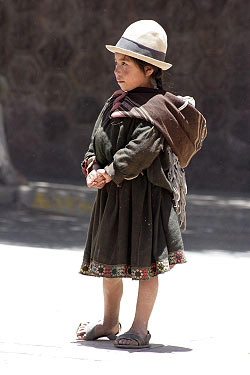
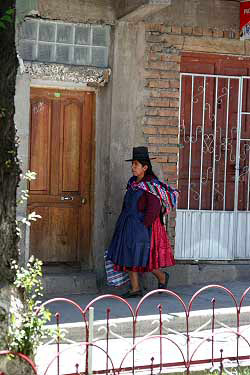
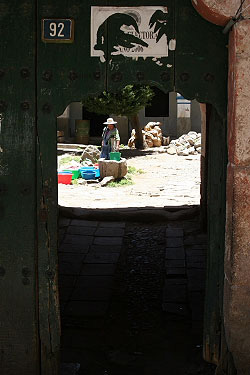
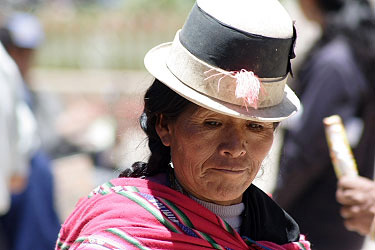
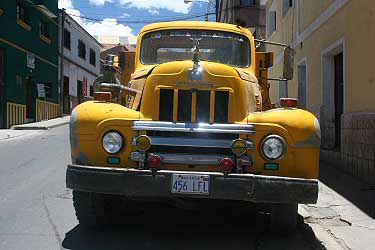
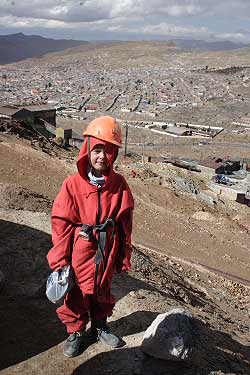
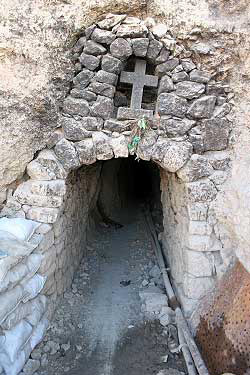 Sacha
and Daniel visit the cooperative mines of Cerro Rico. They are impressed
! A great life experience ! The miners chews coca with catalyser all the
day ... They don't eat before and during the working time. First tuesday
and last friday of each months, they drink a full bottle of pure alcohol
96°. In the mine, it is dark, humid and dusty after each dynamite
explosion.
Sacha
and Daniel visit the cooperative mines of Cerro Rico. They are impressed
! A great life experience ! The miners chews coca with catalyser all the
day ... They don't eat before and during the working time. First tuesday
and last friday of each months, they drink a full bottle of pure alcohol
96°. In the mine, it is dark, humid and dusty after each dynamite
explosion.
Every year, people die with so tough conditions of work. How is it possible to resist to such a difficult life ? Today 20 000 persons are still working there ... looking for zinc, lead, tin and silver.
Visits are allowed and are normaly done for a group. Sacha and Daniel are lucky to be alone with a guide who worked for 5 years in the mines to pay his study ...
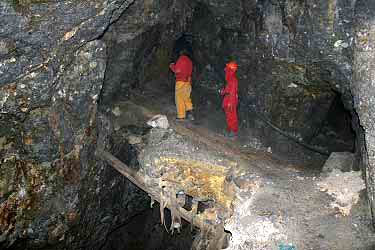
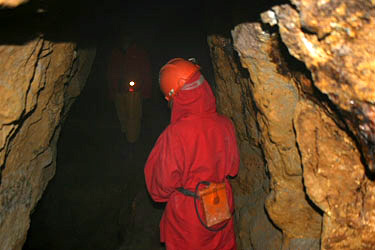
Daniel and Sacha walk in the galleries. Sometimes it is extremly narrow ... When somebody arrives shouting and running with his wheelbarow, they have to flatten along the walls of the gallery ... Sometimes, 2 short shots precede the explosion of the dynamite ... then the ground shakes ... With all the dust, at an altitude higher than 4500m, it is tough to breath ...
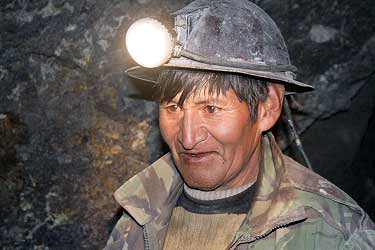



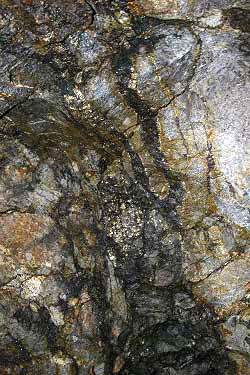
 The miners
venerate still today the devil ( called uncle) and the Pachamama ...
Offerings are done. If the cigarettes burns well in the devil's mouth,
it is a good sign. Today they offer coca, cigarettes and baby lamas.
Before, sometimes it was human babies ...
The miners
venerate still today the devil ( called uncle) and the Pachamama ...
Offerings are done. If the cigarettes burns well in the devil's mouth,
it is a good sign. Today they offer coca, cigarettes and baby lamas.
Before, sometimes it was human babies ...
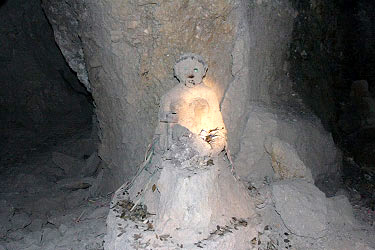
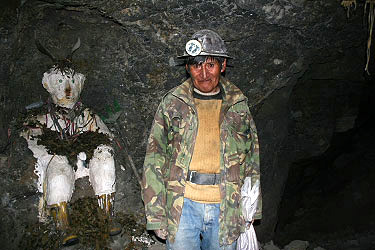
 When
they see the exit, Daniel and Sacha feel relieved ... But it was
worth seeing it !
When
they see the exit, Daniel and Sacha feel relieved ... But it was
worth seeing it !
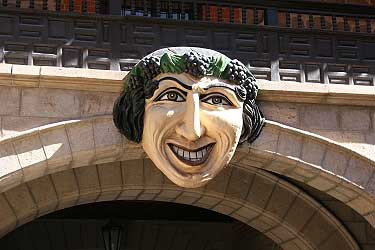 In
the city, we visit ' la casa de la moneda', renowned as one of the best
South American museum. It is here that was coined the spanish money from
1572 until the independance of Bolivia in 1825. After the independance,
they coin the bolivian money until 1953.
In
the city, we visit ' la casa de la moneda', renowned as one of the best
South American museum. It is here that was coined the spanish money from
1572 until the independance of Bolivia in 1825. After the independance,
they coin the bolivian money until 1953.
The silver was casted in bars.


Then the silver bars were laminated ( thickness from 15 mm to 2 mm ). First by hand than with machines using wood gearing. The machines were built in Spain and then sent in 1752 by boat as detached parts. Impressive !
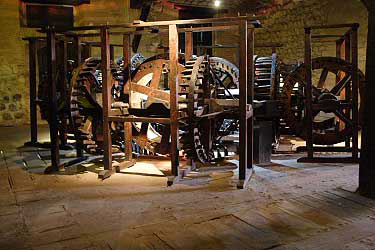
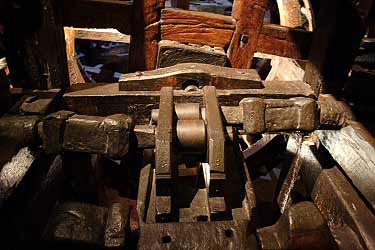
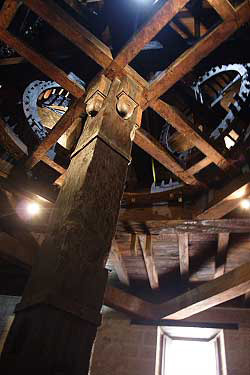
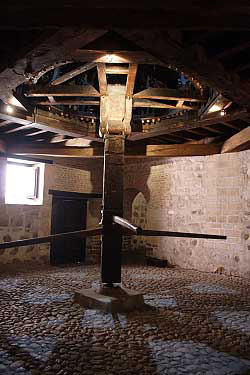
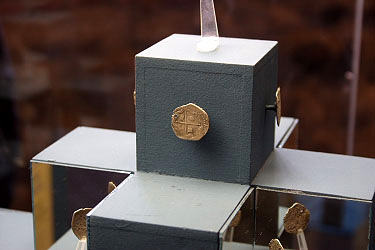 Afterwards,
the money was coined by hand by the indigenes.
Afterwards,
the money was coined by hand by the indigenes.
 Later,
they used the hand rotative press, then they used the vapor and at the
end the electricity ...
Later,
they used the hand rotative press, then they used the vapor and at the
end the electricity ...

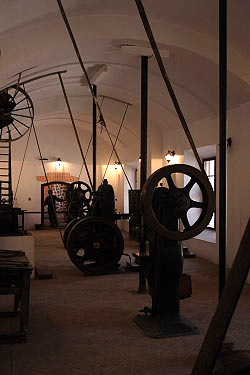
What a paradox ! Today nearly all the bolivian money is produced in ... Spain.
Notice for all the adventurers looking for treasures ! During the colonial time, 26 boats full of coins, silvers bars, gold, .... sank. Only 3 or 4 were found up to now. The value per boat is estimated at 400 millions dollars ...
After several days spent in Potosi, we take the road again in direction of Sucre. Sucre, the white city, is the administrative capital of Bolivia.
We loved Potosi and we were very impressed as well ...
